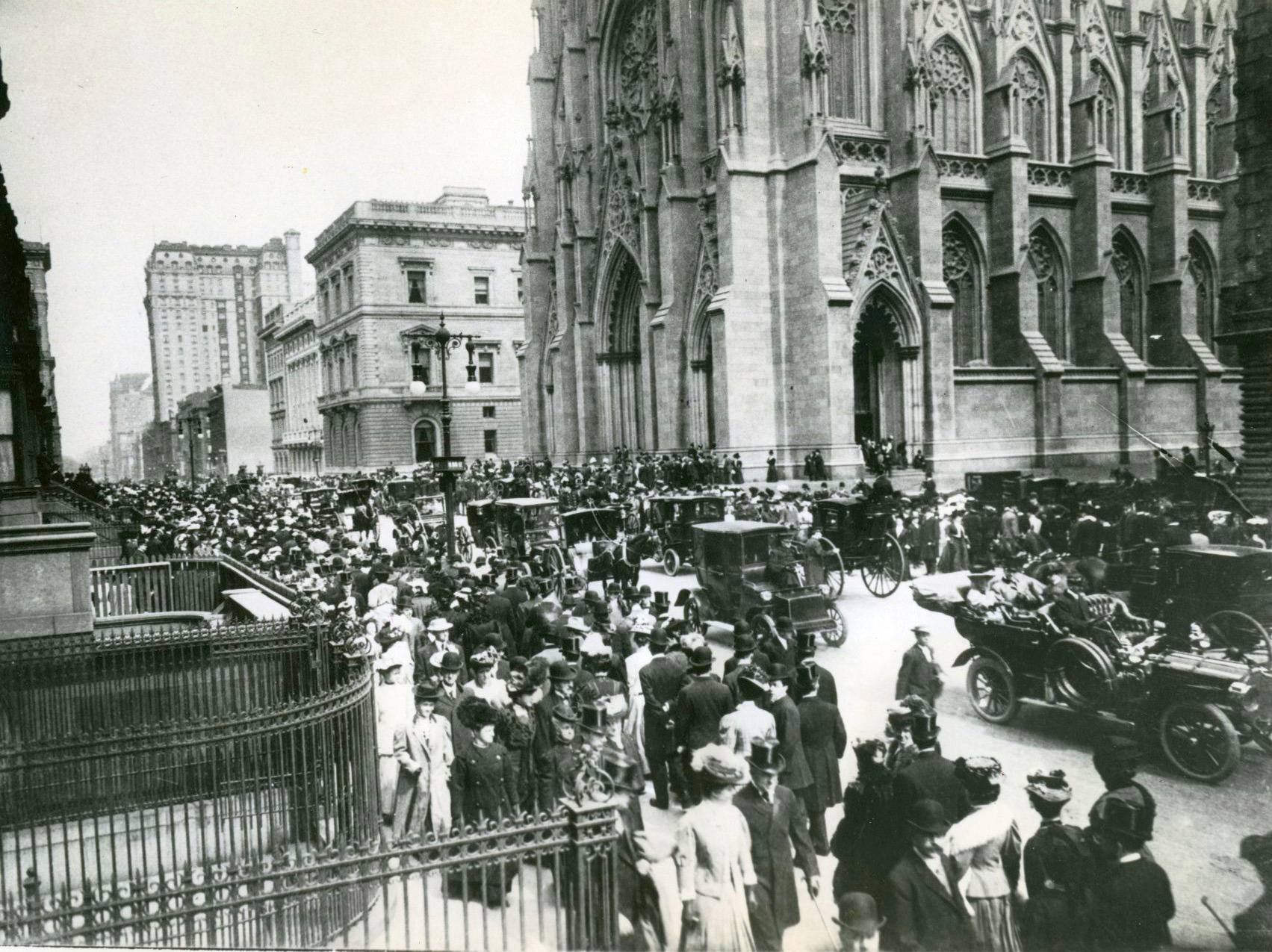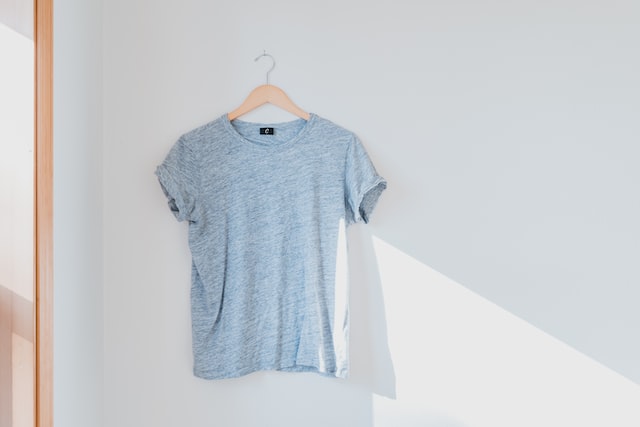Clothing is an intrinsic part of being human, letting us express who we are, what groups we belong to, what jobs we do, and so on. Clothes let us live in specific environments, providing warmth or cooling, depending on where we are. Apart from a few exceptions, it’s also part of our everyday routine.
It’s hardly surprising then that clothing would accrue some more folklore. Some specific items foretold your future married bliss. Other items associated you with the dead. And yet others provided a handy escape from the fairies, should you need one.
After looking at the folklore of footwear last week, this week we’ll look at the folklore of clothes. We’ll cover outerwear (such as coats) and accessories in the coming weeks!
Turning Clothes Inside Out
Perhaps the most common belief within the folklore of clothes is the turning inside out of clothes in relation to fairies. If you found yourself lost while out and about and believed you’d been pixie-led, then turning your jacket or petticoat inside out could break the charm. In some places, people even turned their clothes inside out before they went anywhere suspected of being a favourite of pixies (Opie 2005: 87).
There was also a practice in Yorkshire of smock-turning, in which the wives or girlfriends of those who worked at sea would turn their smocks inside out to help ensure a good wind and success for their partners (Opie 2005: 87).
There was also a belief that if you’d put on your clothes inside out, you should leave them that way. Turning them back the right way might turn your luck too (Opie 2005: 87). This belief was even recorded as late as 1988, so it appears to have been one that has stuck.
Mending Clothes While Wearing Them
A long-held belief explained that people would speak ill of you if you had clothes mended while you were wearing them. In some places, the belief was more specific, saying “If you mend your clothes on your back, You will live much money to lack”. Elsewhere, people thought they would stitch sorrow to themselves if they mended an item of clothing while wearing it (Opie 2005: 87).

While it might sound strange, a woman in 1987 questioned about it suggested it had something to do with sewing a shroud. This could help to explain the origin of the belief, from a time when people perhaps made their own shrouds. Sewing a hem or darning a sock while wearing it might have suggested the idea of sewing up your own shroud while you were inside it.
Clothes of the Dead
Speaking of shrouds, there was also a general distaste towards wearing clothes that had belonged to someone who had died.
In the 19th century, if a person died and their clothes were given to the poor, people might say “Ah, they may look very well, but they won’t wear; they belong to the dead” (Opie 2005: 88). The belief that the dead continued to own their clothing meant the poor wouldn’t say thank you for any clothes they were given from a person who’d died.
It seems to have come from a belief that the clothes would rot as the dead person rotted. This is a form of sympathetic magic, in which whatever happens to one thing happens to whatever represents it. Here, the clothes stand in for the dead person (Opie 2005: 88).
The Inevitable Contradictions
Elsewhere, people believed you’d inherit a legacy if you wore a dead man’s clothes. A dead woman’s clothes would bring a change of job (Daniels 2003 [1903]: 133).
Other people thought that relatives could wear the clothes of the dead if the dead person had a new suit. There was one caveat – they couldn’t alter the clothes as that invited bad luck (Daniels 2003 [1903]: 133).
An old belief claimed you had to be laid out in at least one new piece of clothing if you died suddenly so you would appear well-dressed to other ghosts (Daniels 2003 [1903]: 131). Yet if a sick person picked out the clothes they wanted to be buried in, they wouldn’t die (Daniels 2003 [1903]: 132).
In Wales in the Middle Ages, people tried to buy the clothing of monks to bury their dead in – evil spirits couldn’t interfere with corpses thus dressed (Daniels 2003 [1903]: 132).
People also made sure not to bury anyone with their name on their clothes (Daniels 2003 [1903]: 132).
Special Occasions
There was a belief in northern England and Scotland that the baby must sleep in the clothes in which they were christened. Apparently, this would bring good health to the baby (Opie 2005: 71).

Meanwhile, it was bad luck to fall in love with your partner while wearing mourning clothes. Doing so meant you would never marry them (Opie 2005: 267).
Actors would wear old clothes on opening night at the theatre to assure a good run (Destefano 1969: 49).
Easter Clothes
It was considered good luck to wear their best clothes on Easter Sunday. People needed to wear something new on the day, or they would have bad luck for the rest of the year. For some, this ‘bad luck’ was being pooped on by a bird.
This belief even appeared in an advert on 13 March 1970 in the Bath Chronicle, which reminded people it was lucky to wear something new at Easter (Opie 2005: 131). For some, you should wear three new things at Easter to bring luck for the remaining year (Destefano 1969: 49).

Wearing new clothes before Easter was a bad sign, as referenced in Romeo and Juliet in the line, “Did’st thou not fall out with a Tailor for wearing his new Doublet before Easter?” (Opie 2005: 131).
New Clothes
People in Dorset believed clothes would last twice as long if you wore them for the first time on Sunday. You never put them on for the first time on Friday (Opie 2005: 86).

If you wore something new for the first time, someone else should wish you “Health to wear it, strength to tear it, and money to buy another” (Opie 2005: 86). My mother has wished people the health to wear something new my whole life, and she was fascinated to learn the latter part of the phrase while I researched this post!
According to the Oxford Dictionary of Superstitions, it was a common blessing in Northumberland, which might explain its appearance in my family (Opie 2005: 86).
Spotting a spider on someone’s clothes is a sign they’ll buy new clothes (Destefano 1969: 49).
Love Divination
And it wouldn’t be a Fabulous Folklore article without mentioning a form of love divination! Hanging up a smock so it could be turned by a vision of your future husband was a popular practice. In one version from 1685, Scottish women dipped their smocks in water running south on Halloween. They hung them up to dry so their future husbands could turn them before the fire.

Elsewhere, women followed this practice on Midsummer’s Eve or St Mark’s Eve. In some versions of the practice, you were to hang the smock and sit up until your intended’s apparition arrived. In others, you went straight to bed.
By the mid-19th century, a variation saw young women hanging their inside-out chemises outside on a hedge. Whoever came along and turned it the right way out would be their future husband (Opie 2005: 349).
Superstitions in the Folklore of Clothes
Don’t wear a garment bearing bloodstains made by a clumsy tailor, or touch a handkerchief lost by someone else. Both things would bring bad luck (Destefano 1969: 49). That said, if you made your own clothes and pricked your finger, getting blood on the fabric, you could expect lots of kisses the first time you wore the garment (Daniels 2003 [1903]: 430).
Ironing or starching a shirttail will make its wearer grumpy, and you shouldn’t iron the back of an item of clothing, again, to avoid bad luck (Destefano 1969: 49).
If you were green a lot, you’ll become rich. If your dress tears along the seam, you’ve got a secret enemy, and burning a hole in your dress means luck is on the way. Hang your clothes up at night to attract luck (Daniels 2003 [1903]: 427).

Don’t throw clothes in the fire or you too will die in a fire. Picking up clothing you find lying around will bring sickness. Wearing a new dress for the first time on a rainy day or during a waning moon will bring bad luck. Wearing someone else’s clothes brings their problems onto you. If you want to get a lot of wear out of your clothes, keep a piece of iron in your pocket (Daniels 2003 [1903]: 428).
Buy a dress on New Year’s Day and be assured you’ll always look great in it. Don’t get dressed again if you’ve already gotten undressed for bed or it brings bad luck (Daniels 2003 [1903]: 429).
If the hem of your skirt accidentally got turned up throughout the day, it brought good luck. That said, if anyone could see your petticoat below the hem of your dress, it meant your father loved you more than your mother. This is possibly because a loving mother would pay attention to the length of your hem (Opie 2005: 303). We’ll ignore the outdated gender dynamics there, shall we?
But after the Second World War, the accidental showing of the petticoat became subject to a range of comments from others, such as having total strangers telling you “Your washing is hanging out” (Simpson 2003: 72). By the 1950s, women believed other women showing their petticoat were “husband hunting” (Opie 2005: 303).
What do we make of the folklore of clothes?
Many of these superstitions and beliefs no longer hold sway. Items of clothing fall out of favour as fashions change, and with more people buying clothes than making them, we’re somewhat divorced from their production now.
Yet even now, how many of us have a lucky piece of clothing? I have a dress that I love but no longer wear on dates, after I wore it on three first dates, and in each case, the guy cancelled the planned second date before disappearing. I can’t blame the dress, but part of me doesn’t want to tempt fate!
And look at the people who wear a particular pair of underpants, or a particular T-shirt, when their favourite sports team plays. Maybe you wore a combination of clothes and your team won. Then, you might feel compelled to wear it again… y’know. Just in case.

These superstitions are largely harmless, but they are down to confirmation bias. You’ll only remember the times your team won while you wore those clothes, and ignore the times they didn’t.
Plus, people have personal attachments to clothing. We wear it all the time and we might have made it ourselves. It’s no surprise we’d brought the folklore of clothes into everyday practices, especially as it’s often associated with bringing ourselves luck.
Try some of these superstitions and guarantee yourself the best day possible through your wardrobe!
Are you familiar with this folklore of clothes?
References
Daniels, Cora Linn and C. M. Stevans (eds) (2003 [1903]), Encyclopaedia of Superstitions, Folklore, and the Occult Sciences of the World, Volume 1, Honolulu: University Press of the Pacific.
Destefano, Carl, & Hand, Celeste (1969), ‘Folk Beliefs about Clothing’, Western Folklore, 28 (1), pp. 49–49.
Opie, Iona and Moira Tatem (2005), Oxford Dictionary of Superstitions, Oxford: Oxford University Press (affiliate link).
Nutty about folklore and want more?
Add your email below and get these posts in your inbox every week.
You'll also get my 5-step guide to protecting your home using folklore!









loved this brought back so many memories of my nan she was irish and the stuff in this is exactly like she would say and do if i put sopmething on inside oiut she would not let me turn it back to the proper waqy and oh god help me if she saw me stiching while wearing it ooo i was in big trouble lol she would drum this stuff into my head so i do like hearing you talk about ths ort of stuff it brings back great memeories of my nan who i miss so much who taught me so many tales and folk tales which some of them on here and some that you have already talked about on other ones you did so thank you for doing these i look for ward to listening to them on a sunday morning when its peaceful and sat on own listening to these great storiies you tell THANK YOU so mmuch foe all yopur hard work and bringing them to us